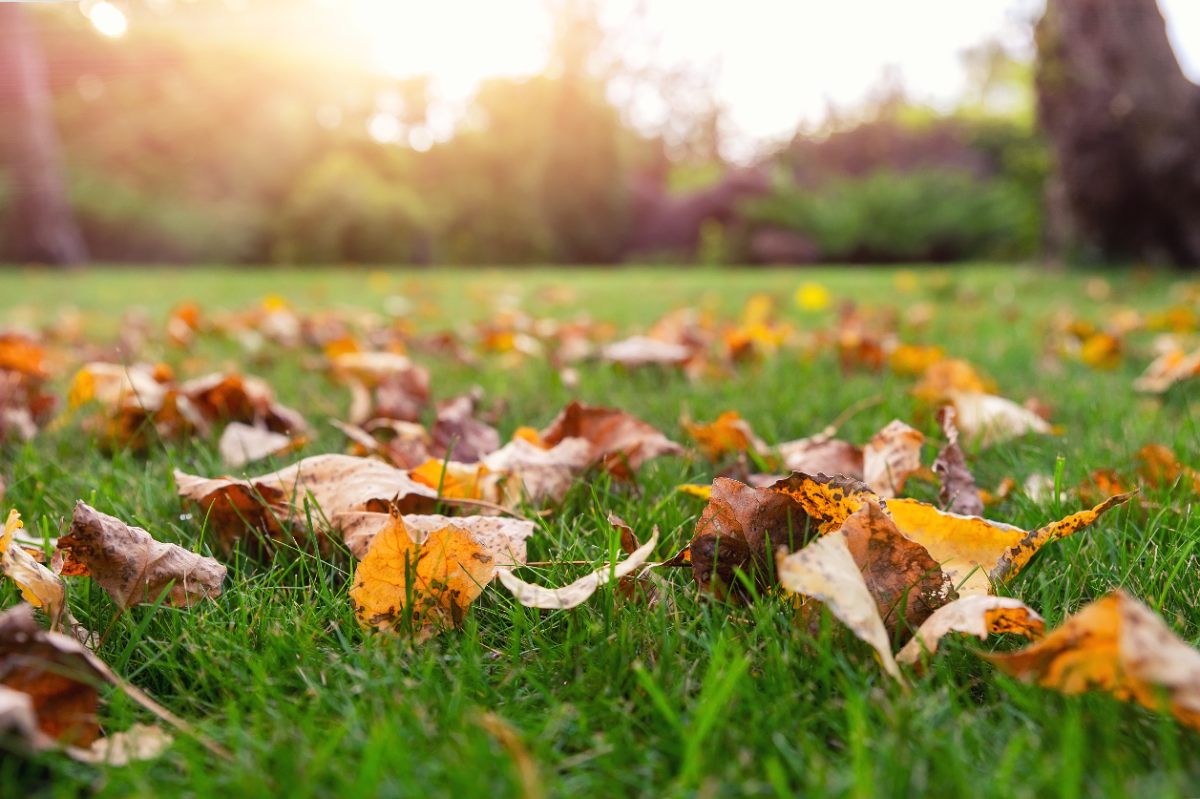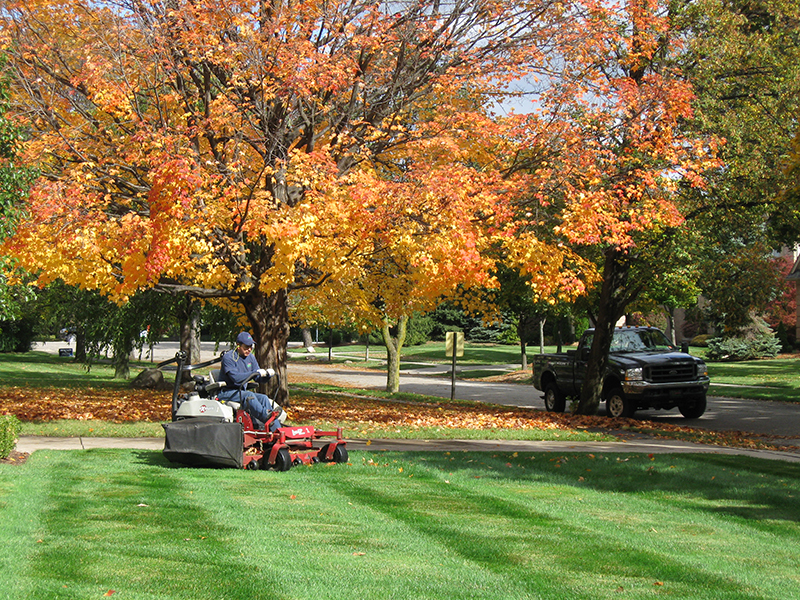If you’re like most homeowners in the Greencastle area and throughout Maryland, you’ve probably stood in your yard around mid-October wondering if you should still be dragging out that hose. The temperatures are dropping, leaves are falling, and you’re just not sure if your lawn still needs that regular watering it’s been getting all summer long. It’s one of those questions that doesn’t have a simple answer plastered on the back of a fertilizer bag.
Maryland’s unique position right on that border between northern and southern climate makes our fall lawn care tricky. Stop watering too early, and you might stress out your grass right when it needs to build strong roots for winter. Wait too long, and you’re wasting water and potentially inviting disease problems that thrive in cool, wet conditions. In this guide, we’re gonna walk through exactly when to stop watering grass in Maryland, how to recognize the signs your grass is ready to go dormant, and avoid the common mistakes that can damage your lawn.
Understanding Maryland’s Unique Climate and Grass Types
The grass growing in your Greencastle yard isn’t the same type you’d find in Georgia or Florida. Maryland sits in a cool-season grass zone, which means everything from when to water to when to fertilize works differently than what you might see on national lawn care advice.
Cool-Season Grasses Common in Maryland:
- Tall Fescue – The workhorse of Maryland lawns, stays green longer into fall and grows actively in cooler temperatures
- Kentucky Bluegrass – Popular for its thick appearance, thrives in fall weather and develops deep roots during autumn
- Perennial Ryegrass – Quick to establish and stays actively growing until hard freezes hit
Maryland’s fall weather is pretty unpredictable. Western Maryland near Greencastle tends to get colder earlier than the eastern shore, with first frosts usually hitting sometime between mid-October and early November. One week you’re still running the air conditioning, the next week you’re pulling out jackets. This variability is exactly why you can’t just pick a calendar date and call it quits on watering.

The Right Time to Stop Watering Grass in Maryland
Here’s the answer everyone’s looking for – you should generally stop watering grass in Maryland between mid-October and early November. But that’s not a hard date you circle on the calendar. The real answer depends on what the weather’s actually doing and what your grass is telling you.
The key trigger to watch for is when nighttime temperatures consistently stay below 40°F. At that point, your grass has slowed down so much that it’s barely using any water. Soil temperature matters too – once it drops below 50°F, root growth pretty much stops and there’s no benefit to watering anymore. You’ll also notice your grass growing slower, needing less frequent mowing, and maybe taking on a slightly darker green or even bluish tint.
Don’t just rely on calendar dates though. Pay attention to the forecast, check your soil moisture by sticking a screwdriver in the ground (if it goes in easily, you’ve got enough moisture), and watch how your grass is behaving.
How to Transition Your Watering Schedule in Fall
You can’t just shut off the water one day and call it done. Your grass needs a gradual transition that matches how it’s naturally preparing for dormancy.
Early Fall (September – Early October):
- Keep watering 1 to 1.5 inches per week including rainfall
- This is when your grass is building the root system that’ll carry it through winter
- Morning watering is still best to prevent disease issues
Mid-Fall (Mid-October):
- Start backing off to every 4-5 days if there’s no rain
- Watch for slower growth – when you’re mowing less often, that’s your signal
- Check soil moisture before watering, if the top 2 inches are still damp, skip it
Late Fall (Late October – Early November):
- Give one final deep watering before the ground freezes
- This should be about 1-2 inches to prepare grass for dormancy
- Once nighttime temps consistently stay below 40°F, you’re done watering for the season

Common Mistakes Maryland Homeowners Make
The biggest mistake we see is people watering right up until Thanksgiving just because they’ve always done it that way. Once temperatures drop and grass goes dormant, that extra water just sits there creating perfect conditions for snow mold and other fungal diseases. Your grass isn’t using the water anymore, so you’re basically just making mud.
On the flip side, some folks shut off the water too early in September when grass is still actively growing and trying to build roots for winter. Another common problem is not accounting for fall rainfall – just because it’s cooler doesn’t mean you need to water if Mother Nature’s doing it for you. And different grass types have slightly different needs, but most homeowners treat their whole lawn the same way whether it’s fescue or bluegrass.
Winter Lawn Care Beyond Watering
Once you’ve stopped watering for the season, your lawn work isn’t quite done. Late fall is actually the most important time for fertilization – that final application of winterizer fertilizer should go down in late October or early November, right before the ground freezes. This feeds the roots all winter long and gives you that early spring green-up everyone’s jealous of.
Keep leaves raked or mulched so they don’t smother the grass. A light layer of mulched leaves is fine and actually adds organic matter, but thick piles will kill the grass underneath. Also resist the urge to walk on frozen grass – those footprints turn into brown tracks that take weeks to recover in spring.
How Professional Lawn Care Helps with Seasonal Transitions
Figuring out when to stop watering grass in Maryland is just one piece of the fall lawn care puzzle. There’s fertilization timing, weed control, aeration schedules, and disease prevention all happening at once. That’s where professional lawn care takes the guesswork out of the equation.
Expert Knowledge of Local Conditions:
- Professionals track local weather patterns and soil temperatures specific to Greencastle and surrounding areas
- They know exactly when your grass type needs to transition based on years of local experience
- No guessing about timing – they’ve seen every type of fall Maryland throws at us
Proper Timing of Treatments:
- Fall fertilization needs to happen at just the right time for maximum effectiveness
- Professionals coordinate watering schedules with treatment applications
- Pre-emergent applications for spring weeds need to go down before the ground freezes
Conclusion
Knowing when to stop watering grass in Maryland really comes down to watching the signs – nighttime temperatures consistently below 40°F, soil temps under 50°F, and grass that’s clearly slowing down its growth. For most of us in the Greencastle area, that means wrapping up watering somewhere between mid-October and early November, but let the weather and your grass be your guide, not the calendar.
The transition from active fall growth to winter dormancy is one of the most critical times for your lawn’s health. Get it right, and you’ll see thick, green grass pop up early next spring. Get it wrong, and you’re dealing with disease problems, weak roots, or drought stress that shows up months later. When you’re not quite sure about the timing or you want to make sure everything’s being handled right, that’s where Maryland lawn services and professional care really pays off.

Recent Comments